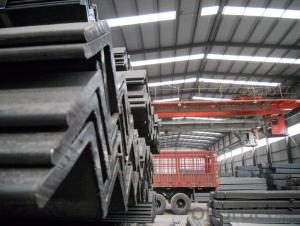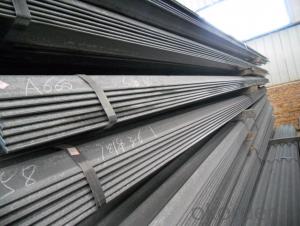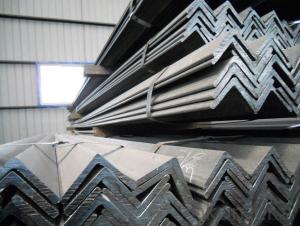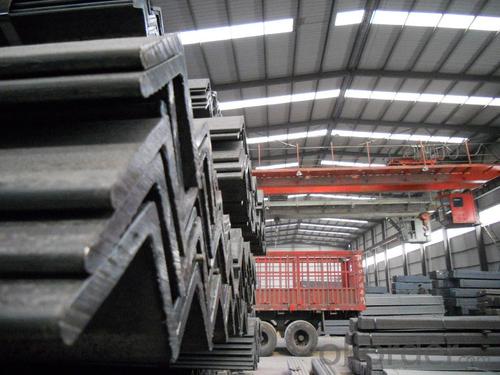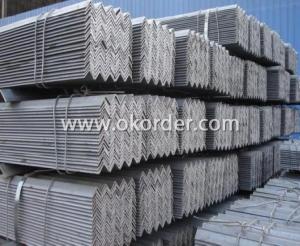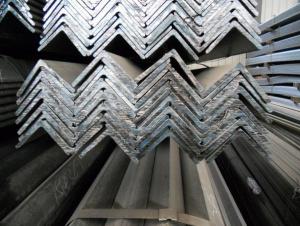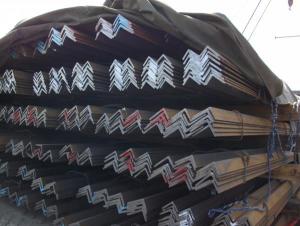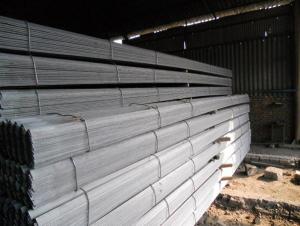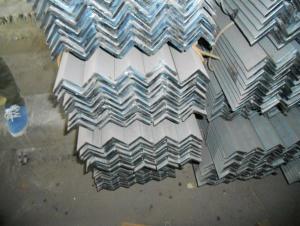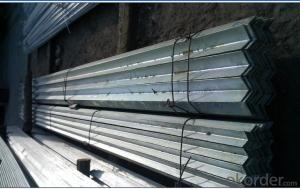Hot Rolled Equal Angle
- Loading Port:
- China Main Port
- Payment Terms:
- TT or LC
- Min Order Qty:
- -
- Supply Capability:
- -
OKorder Service Pledge
OKorder Financial Service
You Might Also Like
Product Description:
OKorder is offering Structure Steel Hot Rolled Angle Bar at great prices with worldwide shipping. Our supplier is a world-class manufacturer of steel, with our products utilized the world over. OKorder annually supplies products to European, North American and Asian markets. We provide quotations within 24 hours of receiving an inquiry and guarantee competitive prices.
Product Applications:
Trusses;
Transmission towers;
Telecommunication towers;
Bracing for general structures;
Stiffeners in structural use.
Product Advantages:
OKorder's Structure Steel Hot Rolled Angle Bar are durable, strong, and resist corrosion.
Main Product Features:
· Premium quality
· Prompt delivery & seaworthy packing (30 days after receiving deposit)
· Corrosion resistance
· Can be recycled and reused
· Mill test certification
· Professional Service
· Competitive pricing
Product Specifications:
1.Standards:GB,ASTM,BS,AISI,DIN,JIS
2.Invoicing on theoretical weight or actual weight as customer request
3.Material: JIS G3192,SS400;SS540.
4. Payment terms:
1).100% irrevocable L/C at sight.
2).30% T/T prepaid and the balance against the copy of B/L.
3).30% T/T prepaid and the balance against L/C
5.Sizes:
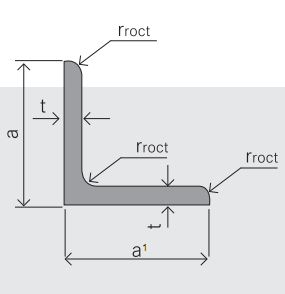
5. Material Specifications:
Grade | Yield Strength,N/mm² | Extension Strength N/mm² | |||
Thickness of Steel,mm | |||||
≦16 | >16-≦40 | >40-≦100 | >100 | ||
SS330 | ≧205 | ≧195 | ≧175 | ≧165 | 330-430 |
SS400 | ≧245 | ≧235 | ≧215 | ≧205 | 400-510 |
SS490 | ≧285 | ≧275 | ≧255 | ≧245 | 490-610 |
SS540 | ≧400 | ≧390 | - | - | ≧540 |
Packaging & Delivery of Angle Steel
1. Transportation: the goods are delivered by truck from mill to loading port, the maximum quantity can be loaded is around 40MTs by each truck. If the order quantity cannot reach the full truck loaded, the transportation cost per ton will be little higher than full load.
2. With bundles and load in 20 feet/40 feet container, or by bulk cargo, also we could do as customer's request.
3. Marks:
Color mark: There will be color marking on both end of the bundle for the cargo delivered by bulk vessel. That makes it easily to distinguish at the destination port.
Tag mark: There will be tag mark tied up on the bundles. The information usually including supplier logo and name, product name, made in China, shipping marks and other information request by the customer.
If loading by container the marking is not needed, but we will prepare it as customer request.
Production flow of Angle Steel
Material prepare (billet) —heat up—rough rolling—precision rolling—cooling—packing—storage and transportation
FAQ:
Q1: Why buy Materials & Equipment from OKorder.com?
A1: All products offered byOKorder.com are carefully selected from China's most reliable manufacturing enterprises. Through its ISO certifications, OKorder.com adheres to the highest standards and a commitment to supply chain safety and customer satisfaction.
Q2: How do we guarantee the quality of our products?
A2: We have established an advanced quality management system which conducts strict quality tests at every step, from raw materials to the final product. At the same time, we provide extensive follow-up service assurances as required.
Q3: How soon can we receive the product after purchase?
A3: Within three days of placing an order, we will begin production. The specific shipping date is dependent upon international and government factors, but is typically 7 to 10 workdays.
Q4: What makes stainless steel stainless?
A4: Stainless steel must contain at least 10.5 % chromium. It is this element that reacts with the oxygen in the air to form a complex chrome-oxide surface layer that is invisible but strong enough to prevent further oxygen from "staining" (rusting) the surface. Higher levels of chromium and the addition of other alloying elements such as nickel and molybdenum enhance this surface layer and improve the corrosion resistance of the stainless material.
Q5: Can stainless steel rust?
A5: Stainless does not "rust" as you think of regular steel rusting with a red oxide on the surface that flakes off. If you see red rust it is probably due to some iron particles that have contaminated the surface of the stainless steel and it is these iron particles that are rusting. Look at the source of the rusting and see if you can remove it from the surface.
Images:
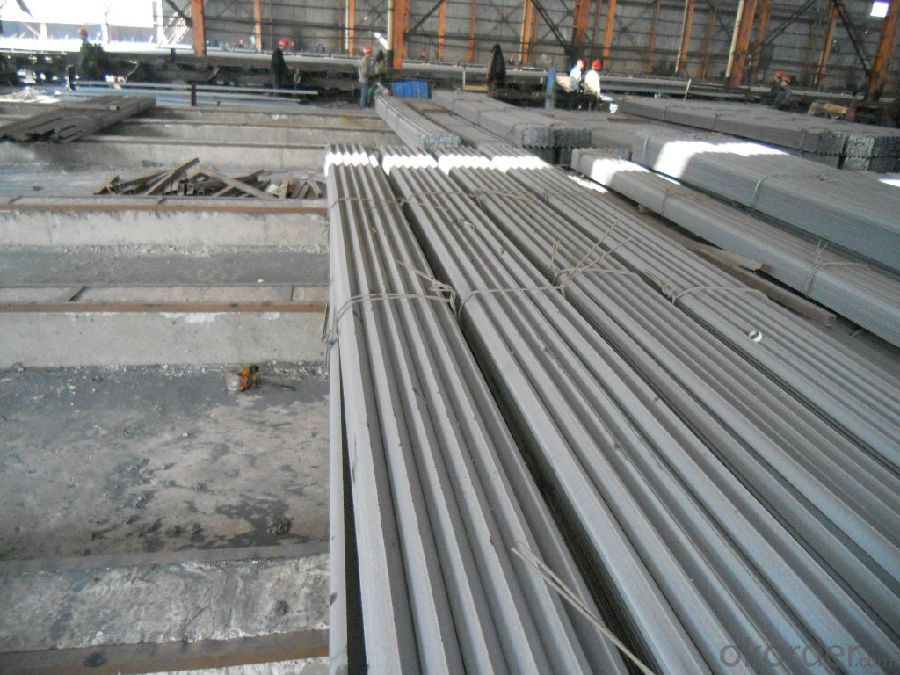
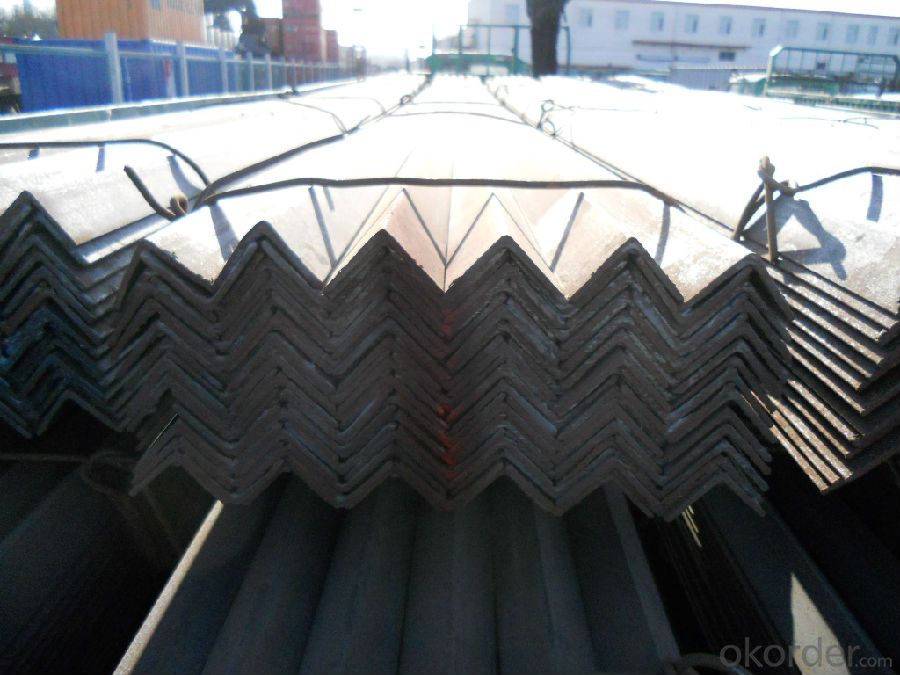
- Q: Unequal angle steel
- Unequal angle steel is a cross section, such as the letter "L", with each side of each other vertically angled and of unequal width. Its specifications are expressed in long, wide, short, wide and * thick edges, such as "L30*20*3", i.e., unequal angles with long sides, wide 30mm, short width, 20mm, and 3mm of edge thickness. Can also use the model (number) said that the model represented by a fraction, molecular side length cm wide, the denominator for the short side number of centimeters wide, such as "L3/2#", said the 3 cm long side, short side said 2 centimeters. The specifications for unequal angles are 2.5/1.6#-20/12.5#.
- Q: What are the different testing methods used for quality control of steel angles?
- There are several testing methods used for quality control of steel angles. These include visual inspection, dimensional measurements, ultrasonic testing, magnetic particle inspection, and load testing. Visual inspection involves visually examining the steel angles for any surface defects or imperfections. Dimensional measurements ensure that the angles meet the specified size and shape requirements. Ultrasonic testing uses sound waves to detect any internal flaws or discontinuities in the material. Magnetic particle inspection involves applying a magnetic field to the angles and using magnetic particles to identify any surface cracks or defects. Lastly, load testing involves subjecting the angles to a predetermined load to determine their strength and structural integrity. These testing methods help ensure that the steel angles meet the required quality standards.
- Q: Can steel angles be used in transportation or infrastructure projects?
- Yes, steel angles can be used in transportation or infrastructure projects. Steel angles are commonly used in construction due to their strength and durability. They are often used to provide structural support and stability in various applications such as bridges, buildings, highways, and railways. In transportation projects, steel angles can be used for constructing vehicle ramps, guardrails, and support structures for overhead signs. In infrastructure projects, they can be used for constructing retaining walls, foundations, and supporting structures for utility installations. The versatility and reliability of steel angles make them a popular choice in these types of projects.
- Q: Can steel angles be used for framing or supporting suspended ceilings?
- Steel angles, known for their strength and durability, are frequently employed in construction to offer structural support and stability. They are ideal for framing and supporting suspended ceilings. By affixing steel angles to walls or ceilings, a framework for the suspended ceiling system can be established. Complementing materials like hangers, wires, and channels are often used in conjunction with steel angles to ensure a secure and stable structure for the suspended ceiling. Furthermore, steel angles can be customized and cut to precise lengths and sizes, enabling their versatility in a wide range of framing and supporting applications.
- Q: What are the common thicknesses of steel angles?
- The common thicknesses of steel angles typically range from 1/8 inch to 3/8 inch.
- Q: What are the limitations of using steel angles in certain applications?
- When considering the utilization of steel angles in specific applications, one must take into account several limitations. To begin with, steel angles may not be suitable for applications that necessitate high strength or load-bearing capacities. While steel angles are generally robust and long-lasting, they may not be capable of withstanding exceedingly heavy loads or forces. In such instances, alternative types of structural steel sections, such as I-beams or hollow sections, may be more appropriate. Additionally, steel angles may not be ideal for applications that require precise dimensions or tight tolerances. Due to the manufacturing process, steel angles can exhibit slight variations in size and shape, which may be unacceptable in certain applications. In these circumstances, it may be necessary to utilize custom-made or precision-machined steel components. Moreover, steel angles may possess limitations in terms of corrosion resistance. If the application involves exposure to harsh environments, such as marine or chemical settings, the steel angles may deteriorate over time. In such situations, materials with superior corrosion resistance, such as stainless steel or aluminum, may be more suitable. Lastly, steel angles may not deliver the desired aesthetic appearance in certain applications. Although steel angles are commonly employed in structural and industrial settings, they may not be visually appealing or compatible with architectural or decorative applications. In these cases, alternative materials or finishes may be preferred to achieve the desired aesthetics. In summary, while steel angles offer numerous advantages in terms of strength, versatility, and cost-effectiveness, they do have limitations in certain applications. It is crucial to thoroughly evaluate the specific requirements of the application and consider these limitations before deciding to utilize steel angles.
- Q: What are the design considerations for using steel angles in architectural applications?
- Some design considerations for using steel angles in architectural applications include structural stability, load-bearing capacity, aesthetic appeal, corrosion resistance, and ease of installation. Steel angles are commonly used to provide support, reinforcement, and stability to various architectural elements such as beams, columns, and frames. The selection of the appropriate size, thickness, and grade of steel angle is crucial to ensure the structural integrity and safety of the building. Additionally, architects may consider the visual impact of steel angles, as they can be exposed or concealed depending on the design intent. The corrosion resistance properties of the steel angles should also be taken into account, especially in applications where exposure to moisture or harsh environments is expected. Lastly, the ease of installation and compatibility with other building materials should be considered to streamline the construction process.
- Q: What are the alternatives to steel angles in construction?
- Construction offers various alternatives to steel angles, each with its own advantages and disadvantages depending on the specific application. 1. Aluminum angles provide a lightweight and corrosion-resistant option for outdoor construction projects. They are easily machinable and have good electrical conductivity. However, they may not possess the same strength and load-bearing capacity as steel angles, limiting their suitability for heavy-duty structural applications. 2. Fiberglass angles, on the other hand, offer a lightweight and non-conductive solution that is highly resistant to corrosion and chemical damage. They are commonly used in industries exposed to harsh environments. However, their strength may be inferior to that of steel angles, necessitating additional reinforcement for heavy loads. 3. Carbon fiber angles are known for their lightweight and high-strength properties, making them ideal for weight reduction in critical applications like aerospace and automotive industries. However, they tend to be more expensive than steel angles and require specialized manufacturing techniques. 4. Wood angles, made from hardwood or engineered wood products, present a traditional and cost-effective alternative to steel angles. They are readily available and easy to work with, often used in residential and light commercial construction projects. However, their strength and durability may not match that of steel angles, and they may be prone to warping, cracking, or rotting over time. When selecting an alternative to steel angles, it is crucial to consider the specific requirements of the construction project, including load-bearing capacity, environmental conditions, and budget. Consulting with a structural engineer or construction professional can help determine the most suitable option for each scenario.
- Q: Can steel angles be used in playground or recreational equipment?
- Yes, steel angles can be used in playground or recreational equipment. Steel angles are a versatile and strong structural material that can be used for various purposes in playground or recreational equipment. They provide stability, support, and durability, making them suitable for use in structures such as climbing frames, swing sets, slides, and other equipment. Steel angles are commonly used to create frames, posts, and supports in playground equipment due to their ability to withstand heavy loads, impact forces, and harsh weather conditions. Additionally, steel angles can be easily customized and fabricated to meet specific design requirements, ensuring the safety and functionality of the equipment.
- Q: What is the maximum length for a steel angle bracket?
- The length of a steel angle bracket can differ based on the manufacturer and design. Typically, these brackets come in lengths ranging from 1 inch to 8 feet or greater. It should be noted that longer brackets may be susceptible to bending or flexing when subjected to heavy loads. Therefore, it is crucial to consider the intended use and weight-bearing specifications when choosing the suitable length for a steel angle bracket. Moreover, it is advisable to consult the manufacturer's guidelines and specifications to guarantee that the maximum length of the bracket is not surpassed, as this could jeopardize its structural integrity.
Send your message to us
Hot Rolled Equal Angle
- Loading Port:
- China Main Port
- Payment Terms:
- TT or LC
- Min Order Qty:
- -
- Supply Capability:
- -
OKorder Service Pledge
OKorder Financial Service
Similar products
Hot products
Hot Searches
Related keywords
